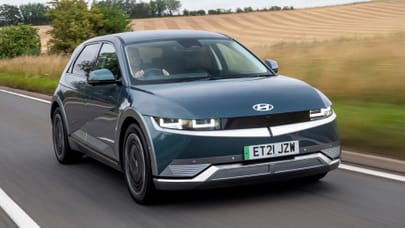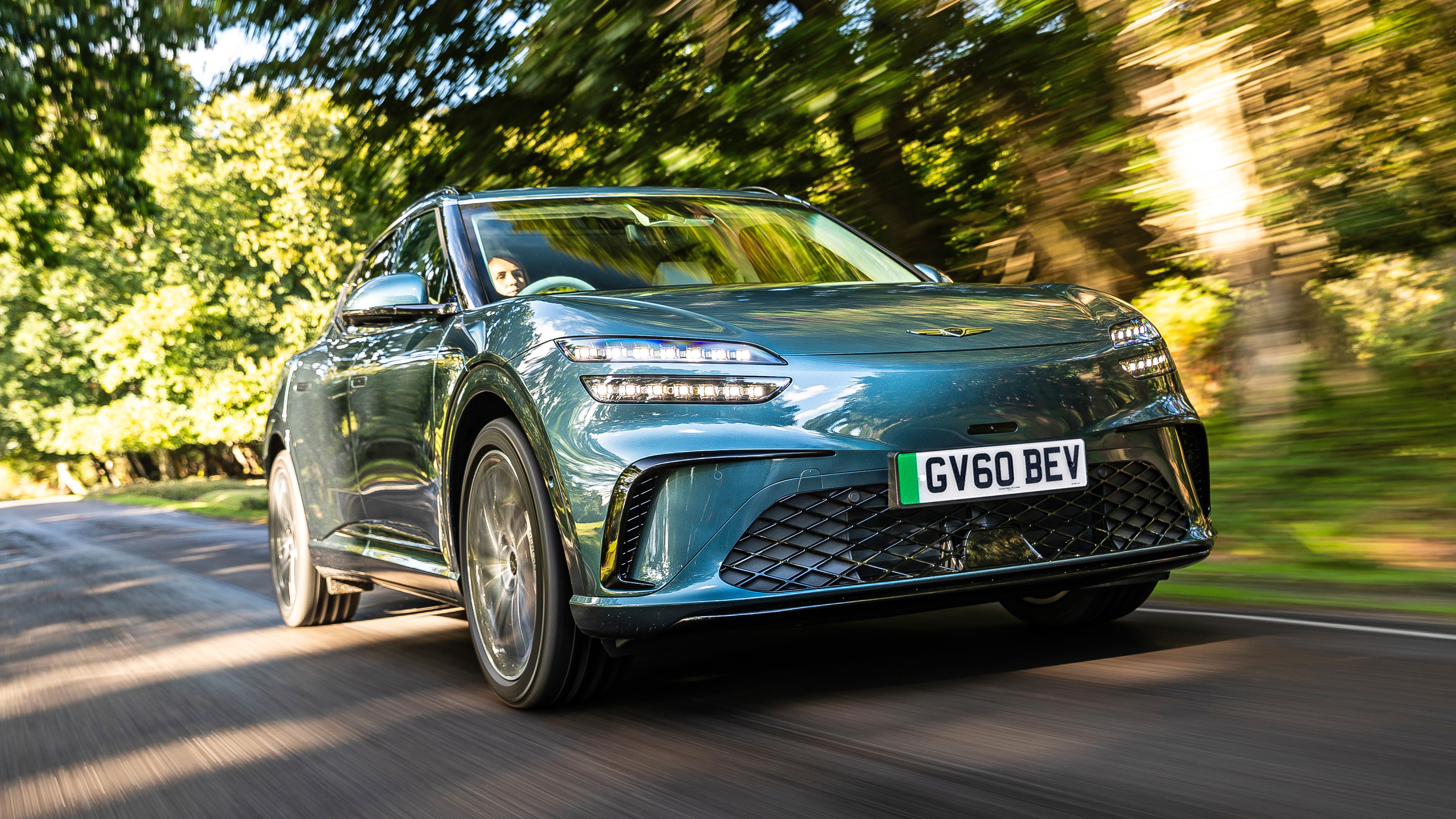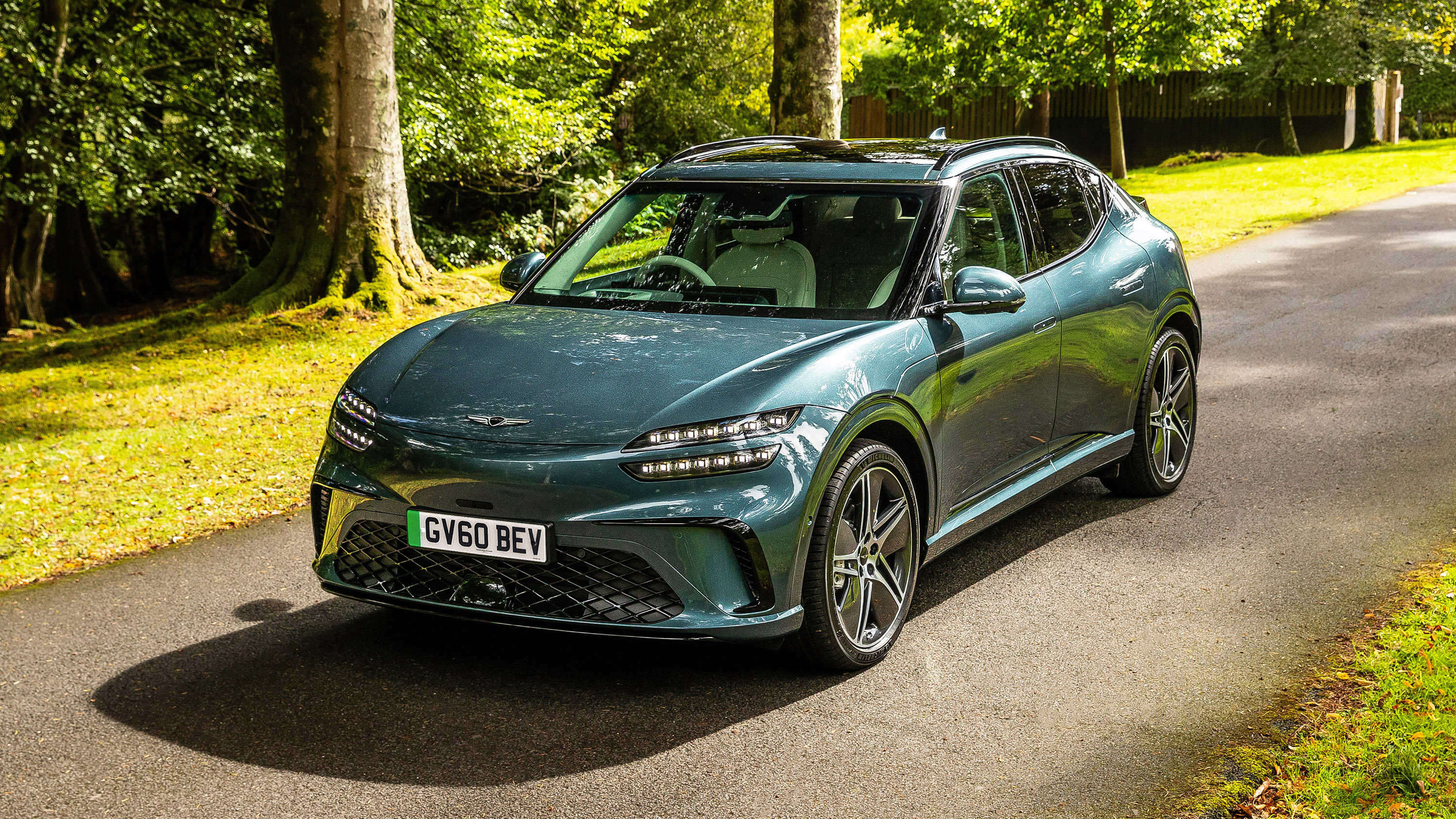
Good stuff
Efficiency, refinement, face recognition tech, virtual gears
Bad stuff
Pricey, not that practical for its size, fast version is *too* fast
Overview
What is it?
It’s the Genesis GV60 – the South Korean firm’s first ever EV and now joined by electric versions of GV70 and G80. Those are petrol cars that have turned electric, the GV60 is electric from day one, built on the same, well-proven and popular underpinnings as the Hyundai Ioniq 5 and Kia EV6.
If you’re thinking it looks strangely familiar, that might be because there’s more than a hint of the wacky Pontiac Aztek in the design. Just look at that rear three-quarter section – the GV60 is an Aztek for the EV age. Hurrah!
Wait, what’s Genesis?
Not caught up yet? Genesis is still fairly new to our shores and there’s no doubt you’ll be asked this question regularly if you plump for a GV60 over its myriad rivals. Essentially it’s the posh branch of the Hyundai-Kia megacorp, much like Lexus is to Toyota and Infiniti is to Nissan (although that venture didn’t end so well in the UK). Genesis has been building standalone cars since 2015, but the company only made the decision to enter the European market in May 2021.
The first cars to arrive here were the G80 saloon and the GV80 SUV, although they were quickly followed by the smaller G70 saloon and GV70 crossover. Getting the hang of the naming structure already, aren’t you? Bigger numbers = bigger cars, V (for versatility, we presume) gets you a raised, SUV body.
The only Euro-specific car launched so far has been the fantastic-looking G70 Shooting Brake, and overall none of them has really set the sales charts alight. There were overtones of Infiniti until the GV60 came along – this is the product that should have led the Genesis onslaught from the beginning.
Why’s that then?
Well it’s really very good. It would have also felt fresh and forward looking to launch with an EV and shown this is a brand here for the long-haul. At least Genesis announced in 2025 it’ll only launch electric cars. It's also the year the GV60 had its big mid-life update, albeit a small one. Usually a good sign nothing was broken to begin with.
Give me some stats, then…
Post-facelift, there are three versions of the GV60: ‘Pure’, ‘Sport’ and ‘Performance’. Genesis previously only fitted the larger, 77.4kWh battery pack that fits in the E-GMP platform, and this update swells it to 84kWh for a max range of 348 miles.
The Performance (previously 'Sport Plus') is obviously the quickest of the bunch, with an electric motor on each axle delivering a combined 483bhp and a 0-62mph time of 4.0 seconds. We actually timed the Sport Plus to 60mph in 3.8s, and 100mph in 9.1s. Put it this way: you do not need or even want your GV60 to be this fast (or, at £67k, expensive).
The Sport still gets two motors and all-wheel drive, but combined they deliver 314bhp and 0-62mph in 5.5s, while base Pure (formerly 'Premium') is rear-wheel drive only with a 226bhp single motor out back.
How far will they all go on a charge?
Because the battery is only feeding one motor, the lowest spec Pure trim actually gets the best WLTP range figure. That’ll do 348 miles on a charge, whereas Sport manages 318 and Sport Plus 311. All are pretty respectable - and about ten per cent up on the pre-facelift GV60 - and efficient at 3.6mi/kWh. There’s ultra-fast 350kW charging too, so if you find a plug capable of those speeds (and can afford it) you can go from 10-80 per cent in under 20 minutes.
How much does it cost?
The entry GV60 Pure is £54,115, Sport has risen to £58,515 and the Performance a slightly mad £67,715. The latter does get a trio of options packs that command £8,000 in the cars below it, though, not to mention a 10-second Boost Mode function, Drift Mode (yes, really) and, since the 2025 update, Virtual Gearshift, which borrows the scintillating faux shifts and soundtrack of the Hyundai Ioniq 5 N, only tuned for a subtler, classier wedge of crossover.
Digital side mirrors are a £1,310 option. There’s even phone-imitating facial recognition tech so you don’t need a key. More on that in the Interior section.
How many people can fit in it?
Only five but with reasonable room – just watch heads in the back due to that dipping rear roofline. Unlike the Tesla Model Y there won’t be a seven-seat option. This is designed to be a more luxurious EV rather than a family hauler.
What's the verdict?
The Genesis GV60 is mightily impressive and deserves to stand proud of many of its electric crossover rivals. It’s smooth, hushed and refined; focus on those qualities and you’ll find a lot to like. It’s swift and easy to drive, but don’t expect it to be as crisp or alert as a Ford Mustang Mach-E or Polestar 2, even with its available Drift Mode and Virtual Gearshift setups.
The latter is impressive, but placed too high in the GV60 price gamut to feel revolutionary, and the ambience of its comfy, attractive interior is most laudable when everything is kept unruffled. Then, Genesis' wellbeing schtick makes most sense.









